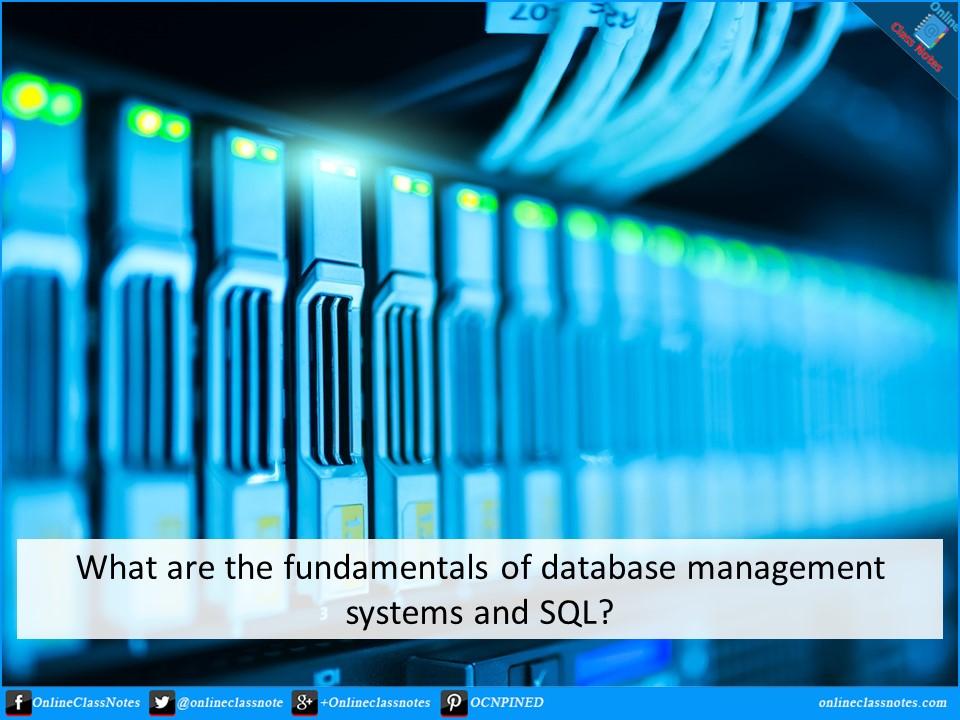Fundamentals of Database Management Systems (DBMS) and SQL
Database Management Systems (DBMS) and Structured Query Language (SQL) are essential components of modern data storage, retrieval, and management. DBMS provides a framework for creating, organizing, and manipulating databases, while SQL is a standard language used to interact with DBMS and perform various operations. Understanding the fundamentals of DBMS and SQL is crucial for effective data management and retrieval. Let’s explore the key concepts and principles:
Database Management Systems (DBMS)
Data Models
DBMS uses data models to define the logical structure and organization of data within a database. The most commonly used data models are the relational model, hierarchical model, network model, and object-oriented model.
Relational Database Management System (RDBMS)
RDBMS is the most prevalent type of DBMS, based on the relational model. It organizes data into tables with rows (records) and columns (attributes). RDBMS provides a set of operations, such as insert, update, delete, and select, to manipulate and query data.
Schema
A database schema defines the logical and structural layout of a database, including tables, fields, relationships, constraints, and indexes. It acts as a blueprint for creating and managing databases.
Data Integrity
DBMS ensures data integrity by enforcing constraints on the data stored in databases. Constraints, such as primary keys, foreign keys, unique keys, and check constraints, maintain data consistency and prevent invalid or inconsistent data.
Transactions and Concurrency Control
DBMS supports transactions, which are units of work that should be executed atomically (all or nothing). Concurrency control mechanisms, such as locking, ensure that multiple transactions accessing the same data do not interfere with each other, maintaining data consistency.
Query Optimization
DBMS optimizes SQL queries to enhance performance by selecting efficient query execution plans. It involves techniques like index usage, join optimization, and cost-based optimization to minimize resource usage and response time.
Structured Query Language (SQL)
Data Definition Language (DDL)
DDL statements in SQL are used to define and manage the structure of databases and database objects. They include commands like CREATE, ALTER, and DROP for creating tables, modifying their structure, and deleting them.
Data Manipulation Language (DML)
DML statements in SQL are used to manipulate data within the database. Common DML commands include INSERT, UPDATE, DELETE, and SELECT, which allow insertion, modification, deletion, and retrieval of data, respectively.
Data Control Language (DCL)
DCL statements in SQL are used to manage access control and permissions within the database. Statements like GRANT and REVOKE control user privileges and permissions for executing DDL and DML operations.
Querying Data
SQL provides a rich set of commands for querying and retrieving data from databases. The SELECT statement is used to specify which columns and rows to retrieve, apply filtering conditions, perform joins, aggregate data, and sort the results.
Joins
SQL supports various types of joins (e.g., inner join, outer join, cross join) to combine data from multiple tables based on related columns. Joins allow the retrieval of data from different tables simultaneously.
Indexing
SQL allows the creation of indexes on database tables to enhance query performance. Indexes provide quick access to specific data based on indexed columns, speeding up data retrieval.
Views and Stored Procedures
SQL enables the creation of views, which are virtual tables derived from the underlying tables. Views offer a simplified and customized view of data. Stored procedures are pre-compiled SQL statements stored in the database, providing reusable and modular code for complex operations.
Triggers
Triggers in SQL are special types of stored procedures that are automatically executed in response to specific database events, such as data modification or table operations.
Understanding these fundamentals of DBMS and SQL empowers database administrators and developers to design, manage, and query databases efficiently. Effective utilization of DBMS and SQL can improve data integrity, optimize performance, and facilitate seamless data management.
